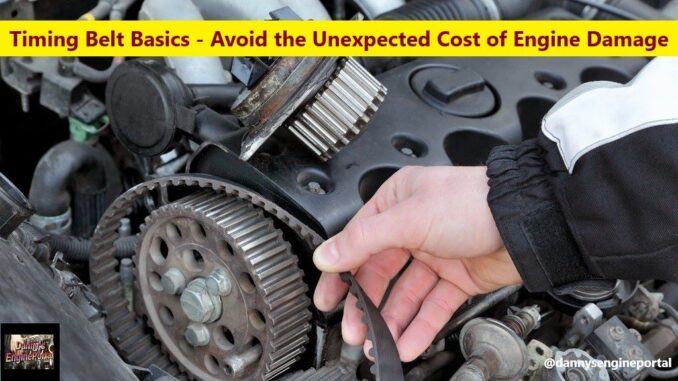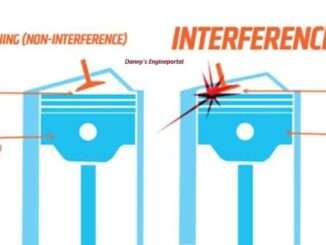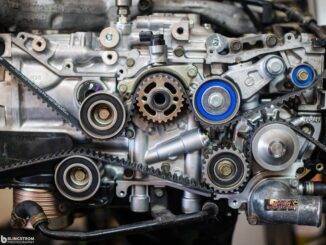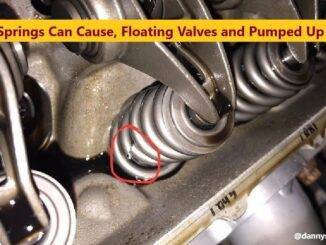
A timing belt is one of those things that’s critical to replace; according to the auto manufacturer’s schedule.
Timing belt replacement is most often between every 75,000 and 100,000 miles. So, check your owner’s manual for the exact schedule for your vehicle.
Because replacing your belt is not one of those things you can just put off indefinitely.
Eventually the timing belt will break, causing you thousands of dollars in engine damage. It’s simply not worth the risk.
So, What Does The Belt Do
The belt transfers the rotation of the crankshaft to the camshaft. Then the rotating camshaft works the valves. Consequently, providing air and fuel to the cylinders. Also expelling combustion gases to the exhaust system.
The belt looks similar to a serpentine belt in appearance. In contrast, they usually have square teeth on the inside surface.
Usually made of rubber reinforced with nylon. Also, often overlooked during routine maintenance.
Symptoms Of A Bad Or Failing Timing Belt Are:
- Rough Engine Idling
- Engine Misfires
- Smoke, From The Engine
- Oil Pressure Decline
- Broken Pistons or Valves
- Excessive Fuel Consumption
If It Fails, The Engine Will Stop And The Vehicle Will Coast To A Stop
The lucky motorist will only have the inconvenience of being stranded on the side of the road. On the other hand, the engine might suffer severe if not catastrophic damage to its internal parts. However, this potential disaster can be avoided easily and relatively cheap. All by replacing the timing belt on time.
The valves and pistons are constantly moving up and down, at very high speeds. So, when the pistons are down, the valves are open. And, when the pistons are up, the valves are closed. But, some engines don’t allow clearance between a valve at its lowest point and a piston at its highest. This is known as an interference engine.
That’s why the timing belt is the critical link, to ensure that these components don’t collide.
If Collision Does Occur You Could Damage Thing Like The:
- Valves
- Pistons
- Cylinder head
- Cylinder walls
- Connecting rods
Subsequently, This Can Be An Expensive Repair.
Other Engines Rely On A Timing Chain, Rather Than A Belt
So, refer to your owner’s manual or take your vehicle to a repair facility if you are unsure. The owner’s manual maintenance schedule is a source of replacement intervals, usually every 60,000 to 90,000 miles.
Unless you have a lot of auto repair experience, a timing belt replacement is not an easy DIY job.
Replacement Usually Requires The Removal Of The Drive Belt That Operates The:
- Alternator
- Water Pump
- Power Steering Pump
- Air Conditioner
NOTE: It’s often recommended to replace the water pump at the same time as the belt. It may cost a bit more for a new water pump. But, you’ll save a lot of money on labor costs if you were to do it later on.
In Summary: Timing Belt
Finally, if you don’t know if your vehicle has a timing belt or a chain, check your owner’s manual.
Thank You!




